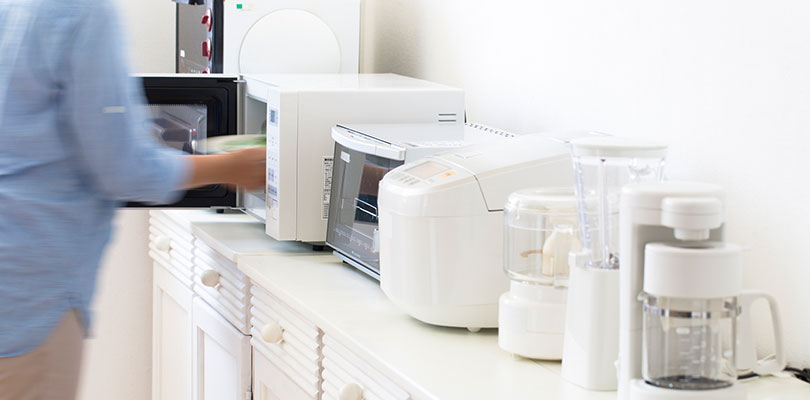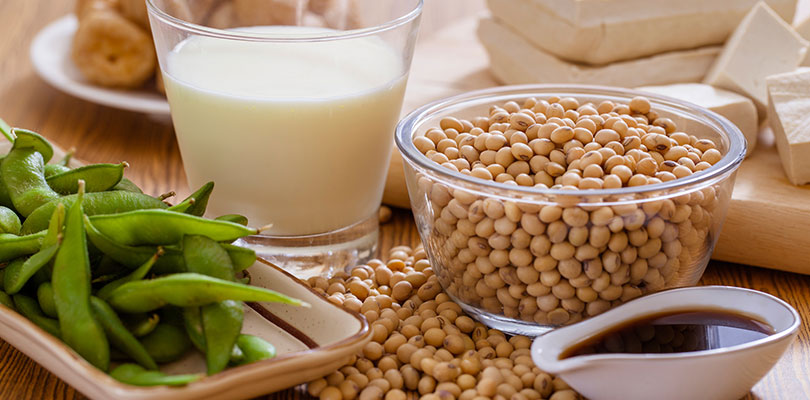
Photo Credit: kazoka30 / istockphoto.com
Separating Fact From Fiction When It Comes to Cancer and Household Products
Cancer is frightening, and with new information piling up every day, it can seem like almost everything raises your risk of the disease. Fortunately, many of the scary claims simply aren’t true: fact and opinion tends to get mixed up quickly, and myths can blossom into popular beliefs without the evidence to support them.
Instead of living in fear of a devastating diagnosis, take a closer look at the evidence behind the common cancer claims. When there is something to be concerned about, there’s a good chance it’s not inevitable, so don’t panic — consider what you can do to decrease your risk.
Household and Hygiene
Understandably, many people are concerned about their exposure to chemicals, radiation, and other invisible threats to their health, especially when it’s central to their everyday routine. Here’s what the experts say about two of the most common household cancer fears.
Microwaves
These nifty little boxes were happily welcomed into homes back when they hit the market in the 1980s, since they cut down cooking time so much.
The reason? They use a certain type of radiation known as radiofrequency (RF) radiation that, when absorbed into things that contain water (like food), will quickly create heat. This is low-energy radiation, as opposed to the high-energy radiation that’s found in X-rays and UV light that is associated with DNA damage and cancer.
Since microwaves do not use the notoriously dangerous radiation, they do not change the molecular structure of the food, and they cannot add toxins or “cancerous” properties. Moreover, the actual waves of radiation that heat the food are locked inside the oven, so you don’t have to worry about exposing your body to any sort of radiation when you’re heating up your meal (unless the door isn’t properly sealed).
Antiperspirant
Every now and then, a new alarming anecdote will circulate online about how antiperspirant causes breast cancer.
The fear seems to stem from a couple of particular ingredients: aluminium chlorohydrate and aluminium zirconium tetrachlorohydrate, compounds that plug your sweat ducts to prevent perspiration. However, studies show these chemicals likely sound more menacing than they are.
Although there have been studies to explore the possible link between the relatively high incidence of breast cancer and the widespread use of antiperspirant, experts like Dr. Ted S. Gansler of the American Cancer Society are quick to point out that there is really no evidence to support that claim.
While many metals are known to interfere with estrogen reception (a player in breast cancer risk), there’s no sign that the ingredients of antiperspirant are absorbed into the breast tissue. However, research is continuing to explore the possibility of a cancer link, so you might want to keep an eye on reports.

Photo Credit: naito8 / istockphoto.com
Foods and Additives
You are what you eat, so you want to make sure you’re eating healthful foods, not toxic ones. Food additives have never been favorites of health experts, and even some “real” foods have come under fire in recent years.
As it turns out, some might be hazardous to your health, while others are less so.
MSG
Monosodium glutamate is one chemical that has been vilified for years, for all sorts of reasons. As a flavor enhancer, it can be found in all kinds of savory products, from sauces and condiments to pre-packaged dinners and — perhaps most famously — Chinese food.
Almost since the day it was introduced, there have been serious suspicions about the health hazards of MSG. These days, cancer is the leading worry.
While some people maintain that MSG is a direct contributor to cancer, no reputable studies have shown a link. MSG has been deemed safe for consumption by three major bodies of medical expertise and regulation: the American Medical Association, the National Academy of Sciences, and the FDA.
Many experts suggest that it’s perhaps the other unhealthy ingredients in processed foods containing MSG that collectively raise your risk of chronic disease.
Aspartame
Many people are concerned about the neurological effects of aspartame, citing headaches, seizures, even nerve damage. There have been some ups and downs regarding the FDA’s relationship to aspartame, too. In the end, it seems like a pretty risky chemical.
Research on aspartame has not supported the scary claims. One recent study published in Critical Reviews in Toxicology took a look at all the research done on aspartame safety, and reported that “The studies provide no evidence to support an association between aspartame and cancer in any tissue.”
Studies on other potential dangers of aspartame are continuing, but so far, there is no link between the chemical and chronic neurological disease in humans. That said, taking in too much of any additive won’t improve your health.
Sugar
Along with fat, sugar is a major problem fueling the obesity epidemic in North America. It’s difficult to argue that huge amounts of empty calories won’t affect your health for the worse, but can it lead to cancer?
Some insist that sugar directly feeds cancer cells, and thus directly contributes to the growth and spread of cancer.
The truth is, sugar doesn’t feed cancer cells more than any other food source. Every cell in your body needs glucose to function and survive, so cutting out carbohydrates is certainly not the answer.
However, refined sugar does impact your insulin levels and your weight, and this can be a problem: insulin resistance can influence cancer cell growth, and research suggests that obesity, diabetes, and related metabolic conditions will increase your risk of certain cancers.
Soy Products
The isoflavones in soy products are estrogen-like compounds, and since estrogen is known to promote the development and growth of breast cancer, there has been a good deal of concern about including soy in the diet.
In fact, studies show that soy might actually reduce your risk of breast cancer: women who took in the most soy isoflavones were up to 30 percent less likely to develop breast cancer.
However, some research suggests that a lot of soy could turn on certain genes that might encourage cancer cell growth in some women. This is not to say that every women who enjoys soy is at risk, but rather that some women with breast cancer may be genetically vulnerable to the compounds in soy.
Breast cancer isn’t the only worry with soy. Some doctors have pointed out that cultures who enjoy high amounts of soy may not have high rates of breast cancer, but they are more prone to thyroid cancer, esophageal cancer, and digestive cancers.
At this point, medical experts agree that soy products are a safe addition to a healthy diet, but stick to traditional forms like edamame and tofu, rather than highly processed “meat-like” substitutes.
This article will look into digestive system cancer and discuss 6 of the worst foods that can lead to it. Read on to learn more.

Photo Credit: Rawpixel Ltd / istockphoto.com
Stimulants and Drugs
Anything that changes your state of consciousness, perception, or physiology can have an impact on your physical health. Dangerous drugs have no place in a healthy lifestyle, but two commonly used substances are could also create some problems.
Marijuana
This herbs is grabbing headlines all over the world, and more patients are embracing the therapeutic effects of medical marijuana. Research is ongoing, and so far studies have returned promising results, but there are still concerns regarding long-term health consequences, including cancer.
When it comes to cancer, marijuana’s effects are not straightforward. On the one hand, smoking any substance (particularly when it’s wrapped in paper) creates all sorts of toxins and carcinogens to be inhaled — this is simply the result of combustion.
In turn, this puts your lungs at risk for chronic disease. On the other hand, recent research has strongly linked cannabinoids found in marijuana to pain relief, anti-inflammatory benefits, and relief from cancer side effects. These powerful compounds in marijuana have also been shown to kill cancer cells in a laboratory setting.
Coffee
Caffeine is the most commonly used stimulant, and coffee brings a host of positive effects (and some negative). When it comes to cancer, research suggests that coffee either has no impact or a positive one — it has been shown to protect against cancers of the endometrium, colon, breast, and esophagus, among others.
Health risks are few, and they tend to show up in heavy coffee drinkers. For instance, there is evidence to suggest that heavy coffee consumption might be linked to higher risk of lung cancer, although experts point out that many heavy coffee drinkers are also smokers.
In the end, coffee drinking does not seem to raise cancer risk, and may in fact protect your body from the disease.

Photo Credit: Liv Friis-Larsen / istockphoto.com
The Takeaway
Cancer is still a mysterious disease, and there’s plenty of room for conjecture and opinion in any discussion — it’s easy to get sucked in by big claims or scared off by nasty stories. The best thing you can do is approach any info on cancer causes and new treatments with a critical eye, and try not to let your emotions get the better of you.
You are responsible for your own health, so take the time to explore and investigate before changing the way you live.
Acute myelogenous leukemia (AML) is a type of blood cancer. It typically starts in the bone marrow where blood cells are made.








